8 Adventurous Things to do in Death Valley
Death Valley is one of our favorite National Parks. It’s a landscape unlike any other and offers a wide variety of things to see and do. Death Valley is the largest national park in the contiguous United States so even though we’ve been several times we still manage to find more to explore! Here is a small sampling of our favorite things to do in Death Valley.
The
Easily Accessible
Panamint Dunes
These dunes lay just outside the western park boundary in Panamint Valley. There is a dirt road with heavy washboards that leads to the parking area and trailhead. Though the hike is listed as being 8 miles, it can great vary weather or not you decide to press to the summit of the higher dunes. We wanted to summit highest dune and thus started very early in the morning while the air was still cool and ended up doing just over 8 miles for the entire loop. This hike is very exposed and offers no shade, be sure to take plenty of water and choose your time of day accordingly.
Total Distance: 8 Mile Loop
Ascent: 1,028 ft
Trail information: https://www.nps.gov/deva/planyourvisit/hiking.htm#PanamintDunes
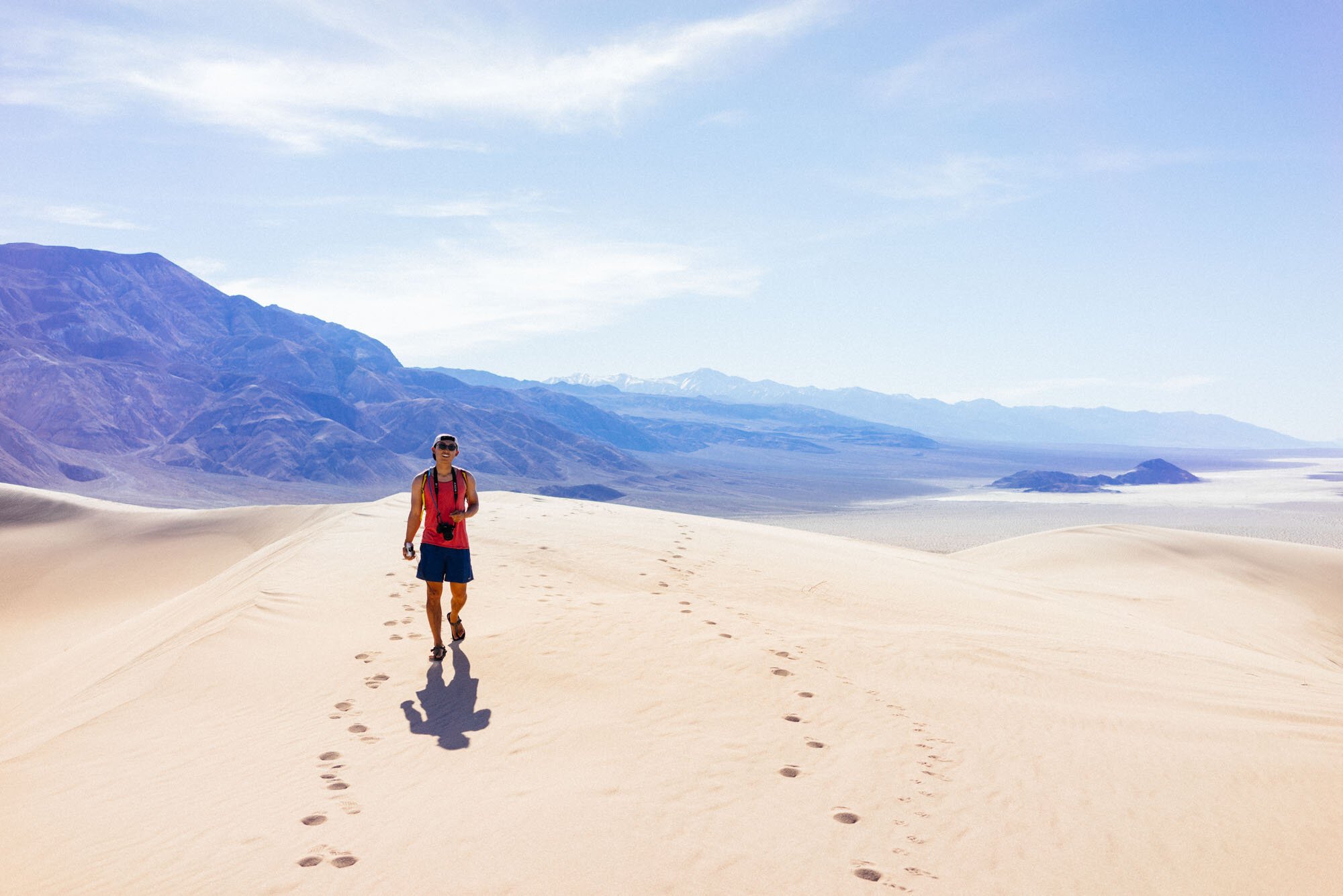
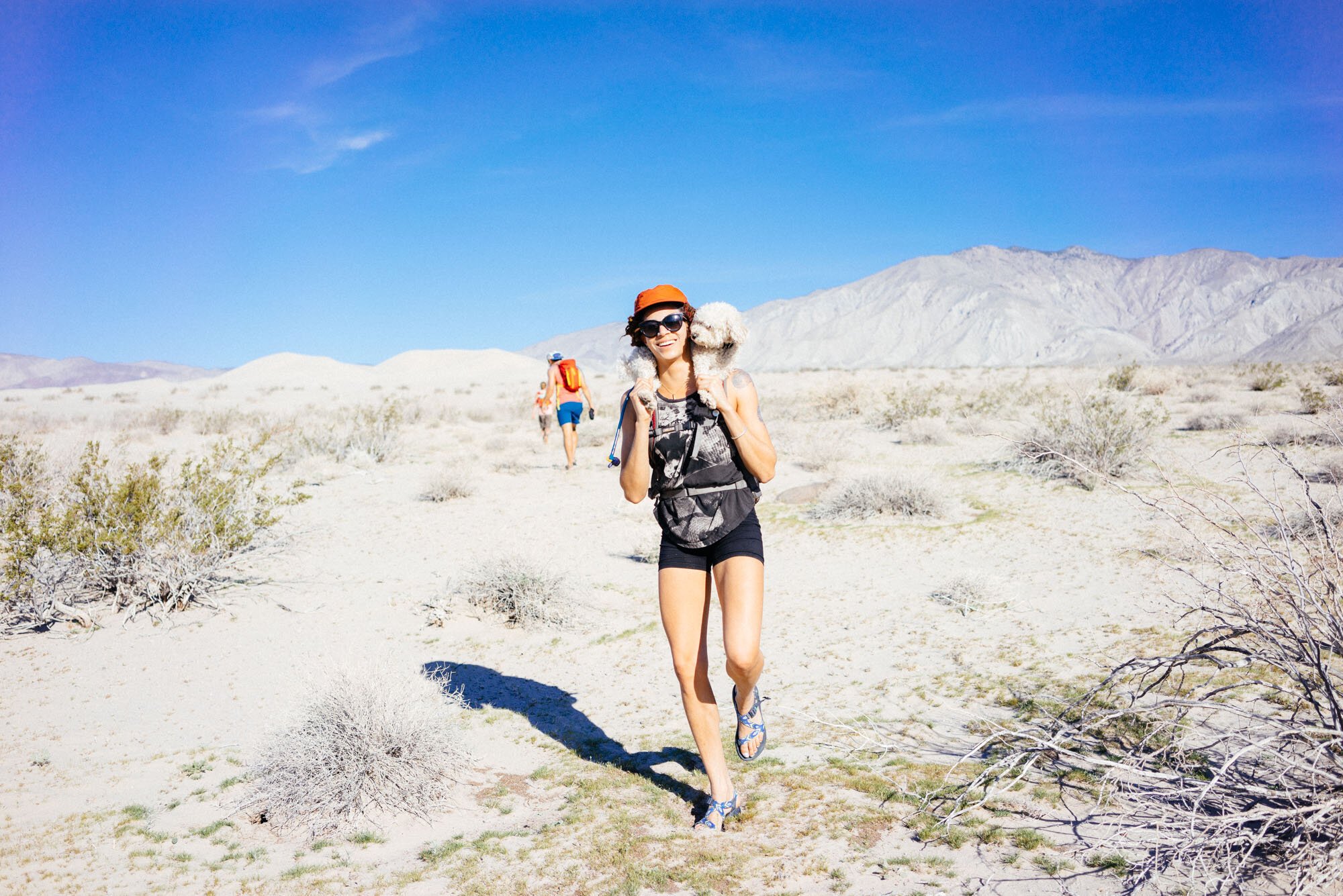
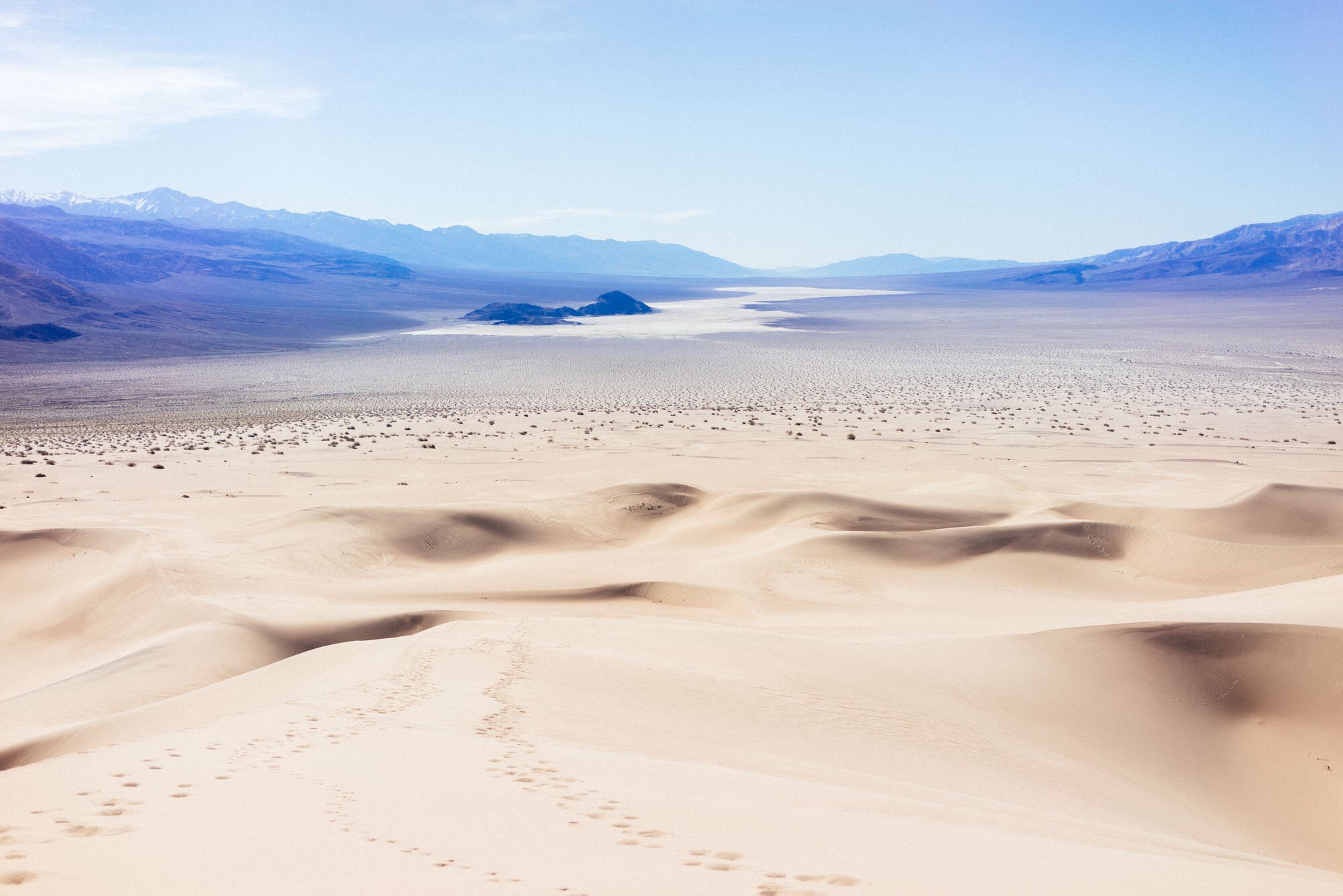
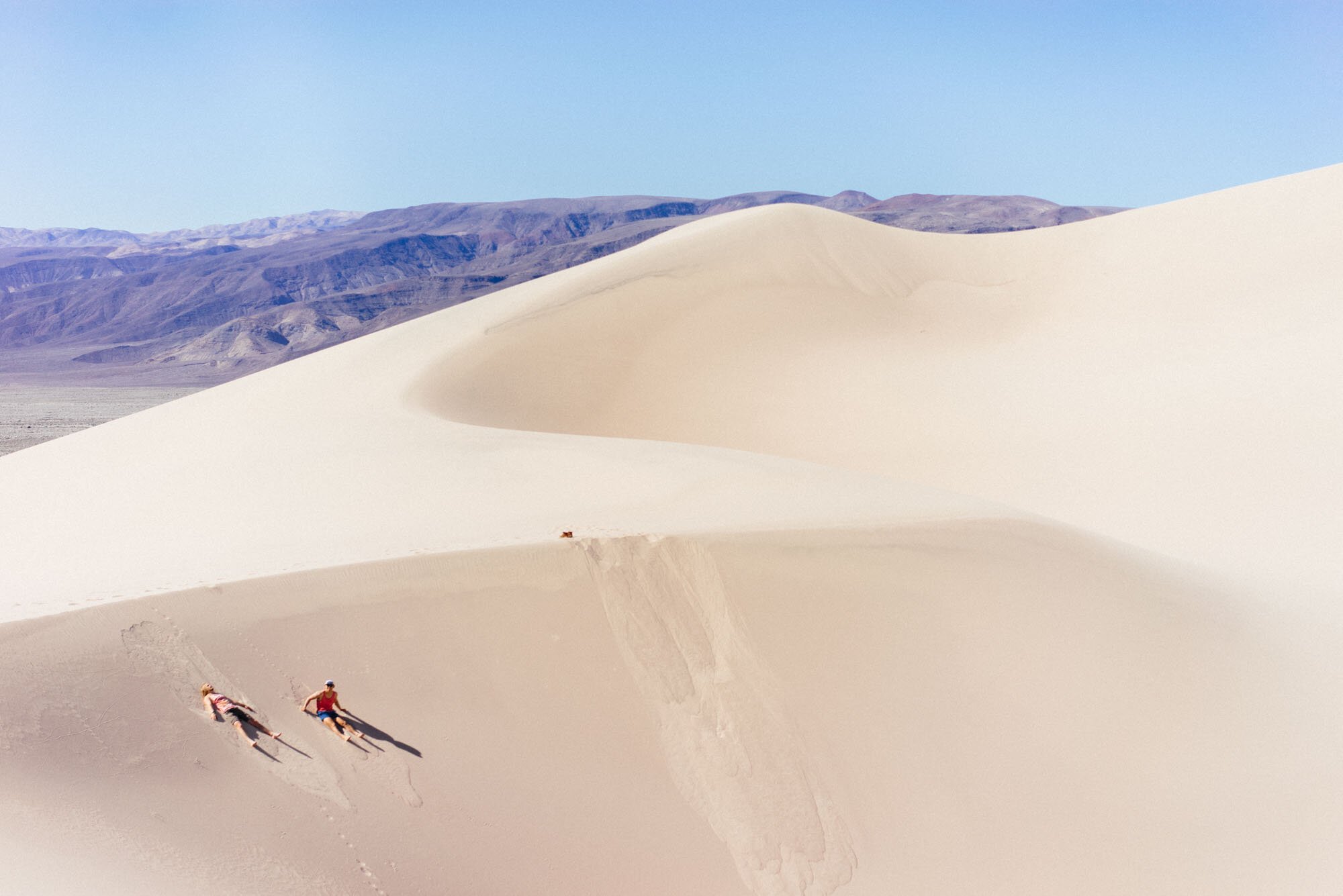
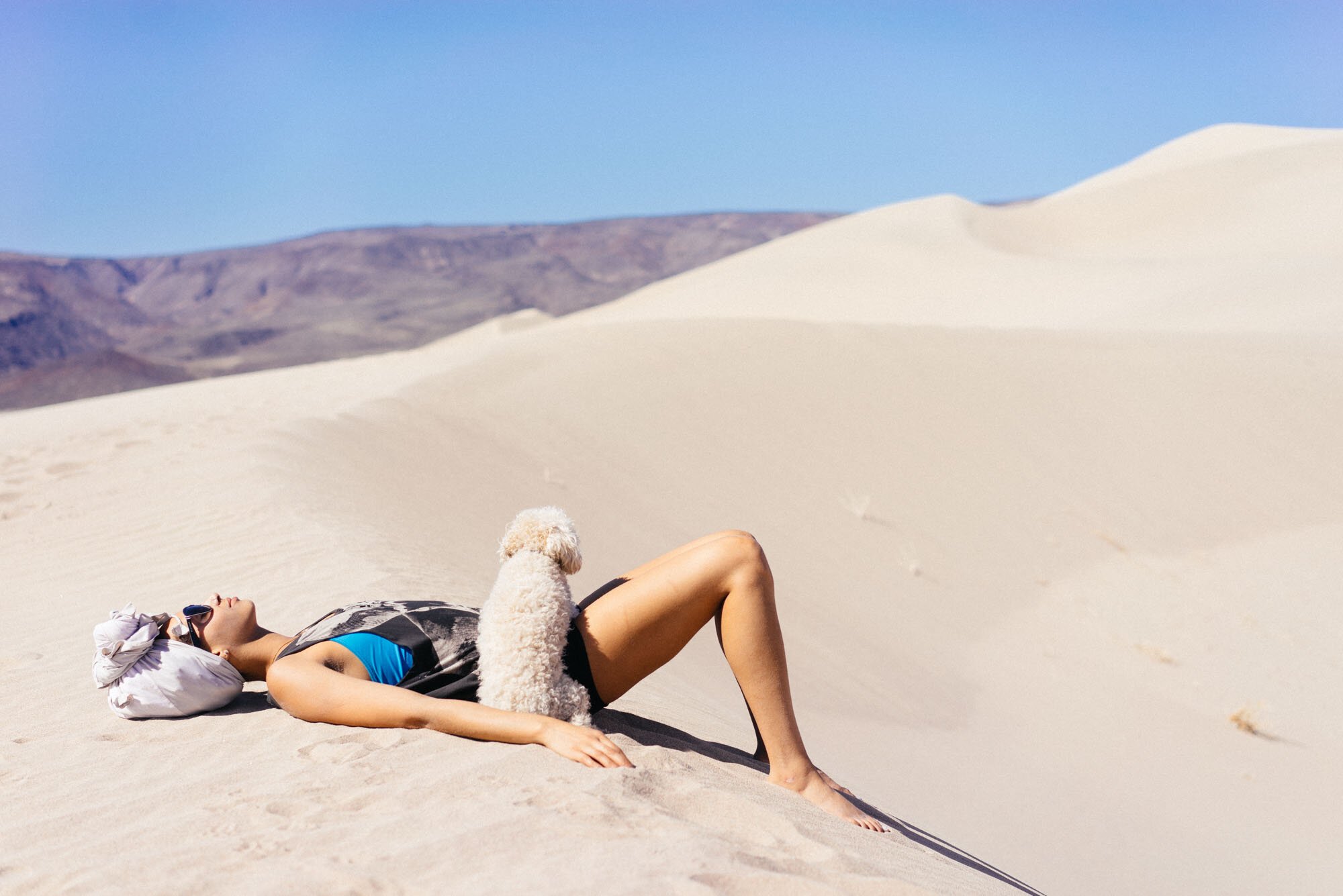
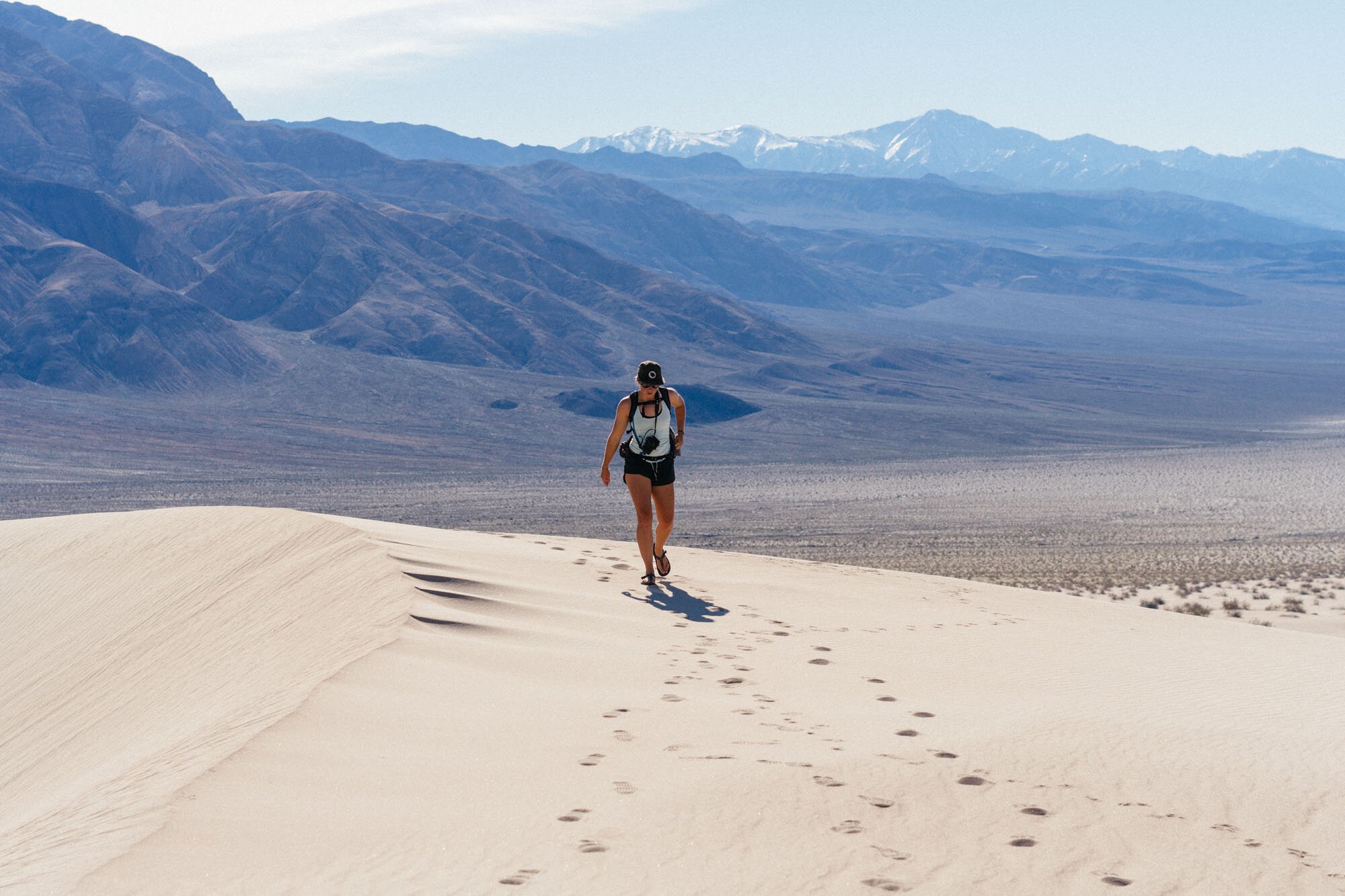
Badwater Basin
Badwater Basin is the lowest point in North America at an elevation of -282 ft below sea level and is also a large salt flat. There is a small spring-fed pool near the road but is undrinkable due to the salt content thus giving it the name “Badwater” Basin. During the wet times of the year, the salt flat does periodically flood.
Zabriskie Point
Located inside the park, Zabriskie Point is a heavily trafficked, but incredibly beautiful viewpoint of the eroded hills of the Amargosa Mountain Range. Though you’re likely sharing the view with a large number of people, the views are well worth the stop. If you like photography, we recommend Zabriskie for sunrise! There are also a few short hikes that leave from this area that traverse the barren landscape.
Titus Canyon Road:
Titus Canyon is a one-way 27-mile road that starts at the eastern park boundary and travels west. Just before entering the canyon the road passes through Leadfield, an old mining ghost town that was established in 1926. Sadly, the mining was so bad that the town only survived a single year but a few buildings still remain. Once you enter the canyon the walls quickly rise and it becomes narrow with tight turns. It’s recommended that you use a high clearance 2WD vehicle to traverse Titus Canyon Road.
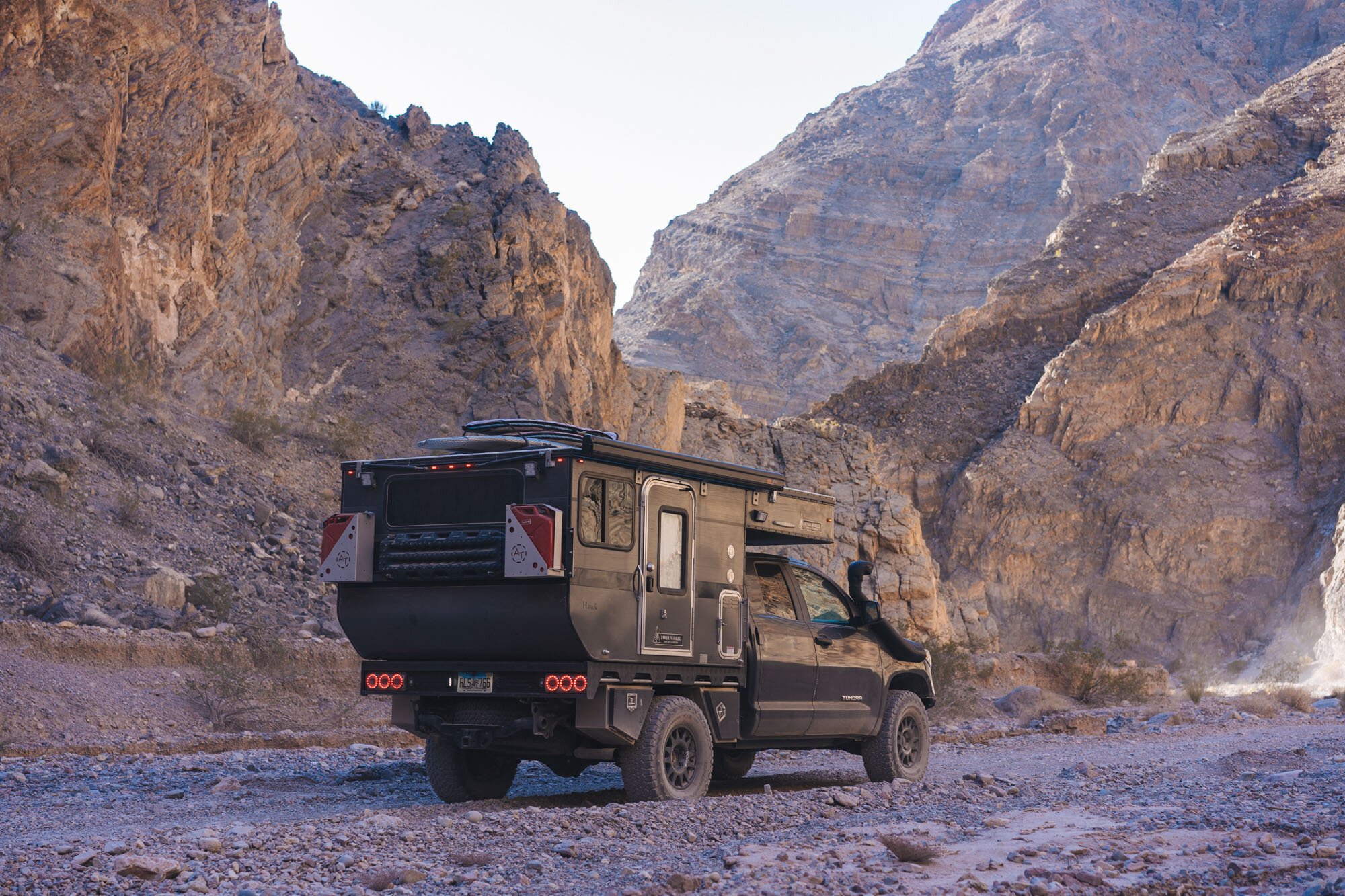
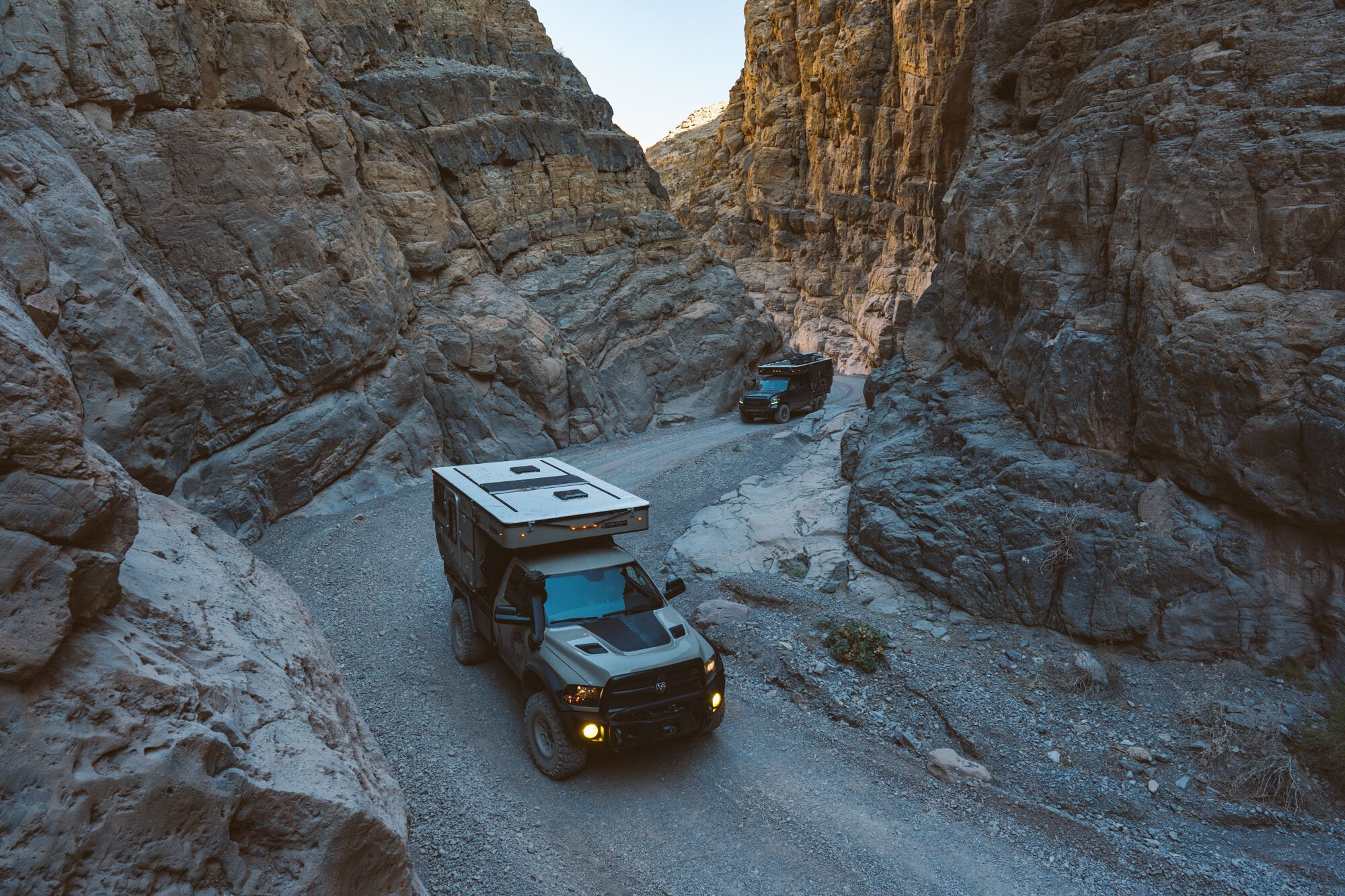
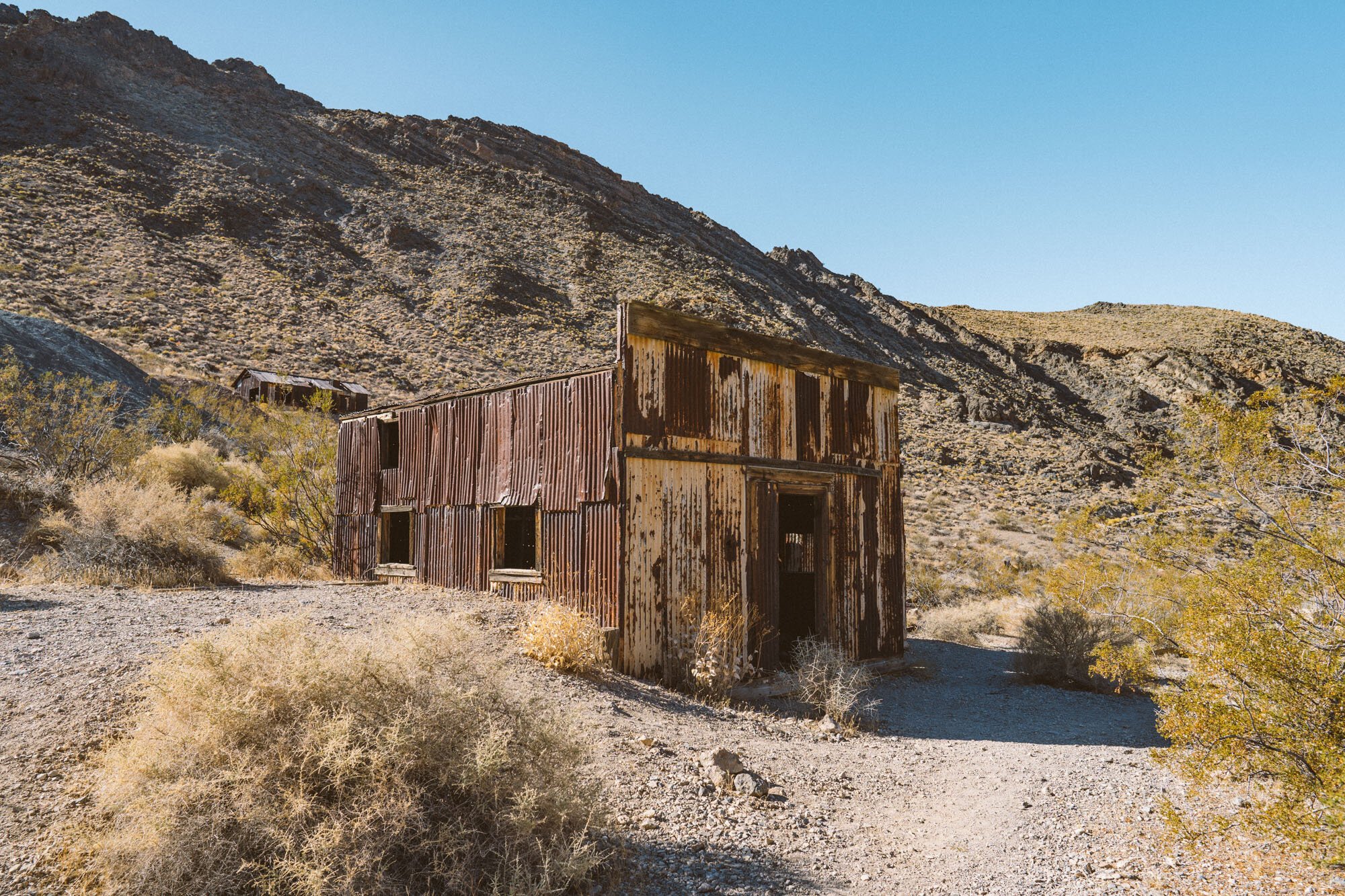
Wildrose Charcoal Kilns
The charcoal kilns are located in Wildrose Canyon and are our favorite historical-architectural landmarks in Death Valley National Park. The site has ten beehive-shaped structures, about 25 feet high, that were used for making coal to support the mines in the area. These kilns are said to be the best-known example of these types of kilns in the western United States.
Further off the beaten Path
Telescope Peak
Telescope Peak is the highest peak in Death Valley National Park at just over 11,000 feet of elevation. The hike leaves from Mahogany Flat Campground. The summit gives you 360-degree views of Panamint Valley to the West and Death Valley to the East. 4x4 capability may be needed to reach the trailhead.
Total Distance: 12.68 Miles
Ascent: 3264 ft
Highest Elevation: 11,049 ft
Time on Trail: 5hrs 54mins
Trail information: https://www.alltrails.com/trail/us/california/telescope-peak-trail
The summit of Telescope Peak
Eureka Dunes
The Eureka Dunes lie in the remote Eureka Valley, in a remote basin in the northwest part of Death Valley. The dunes cover an area 3 miles long and 1 mile wide and are the tallest sand dunes in California at over 700 ft. The Eureka dunes are challenging to climb because of their steep faces and high elevation (3000 ft at the base). They are also singing dunes! At the higher peaks, the sand shifting creates the sound of a helicopter flying overhead and causes a vibration that can be felt through your whole body. There are only a few dunes in the entire world that are classified as singing dunes.
The road into Eureka Dunes is long, dirt, and has some heavy washboards. We recommend airing down your tires to make for a smoother ride. It’s also recommended to have at least high clearance and a spare tire. (We used a spare tire)
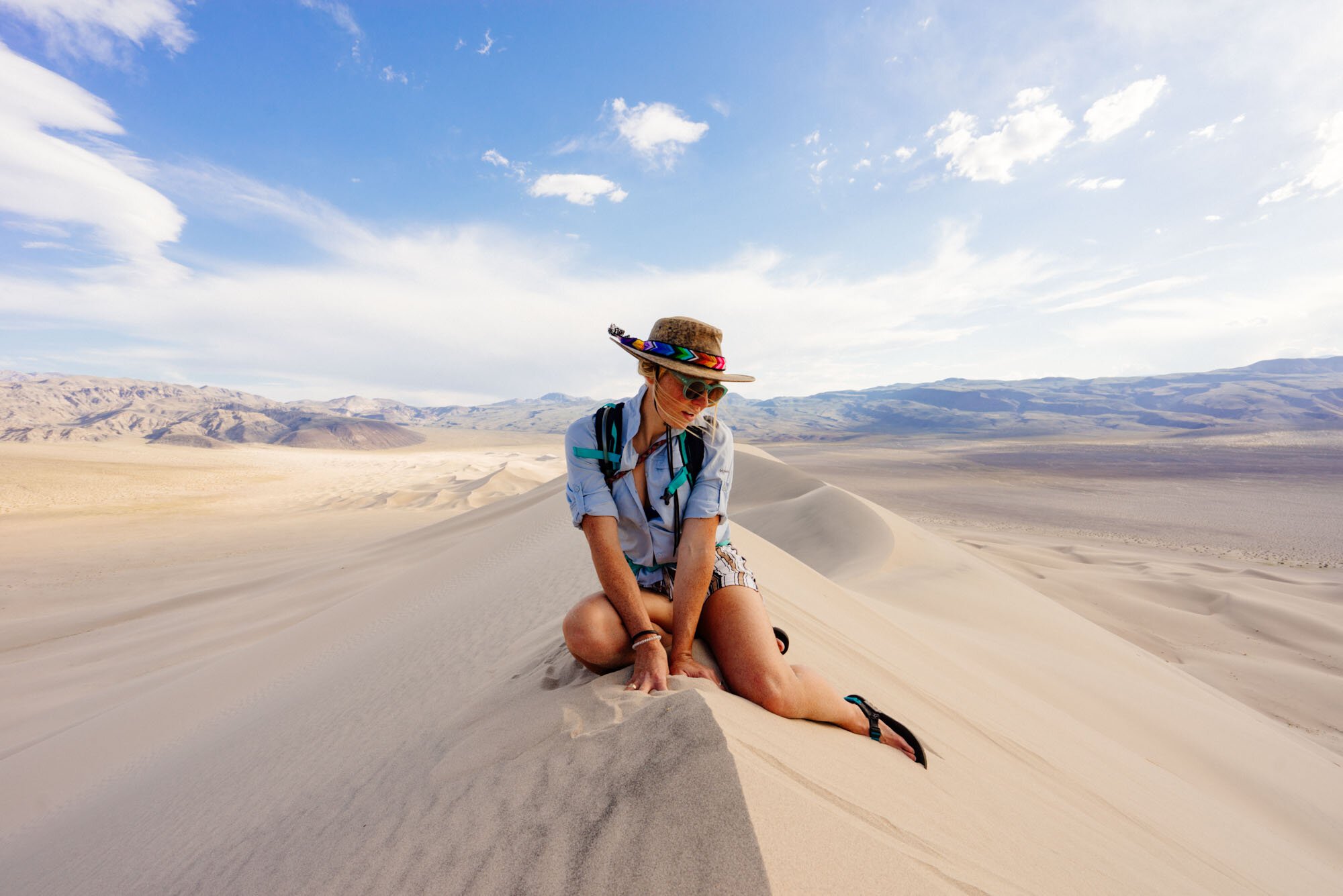
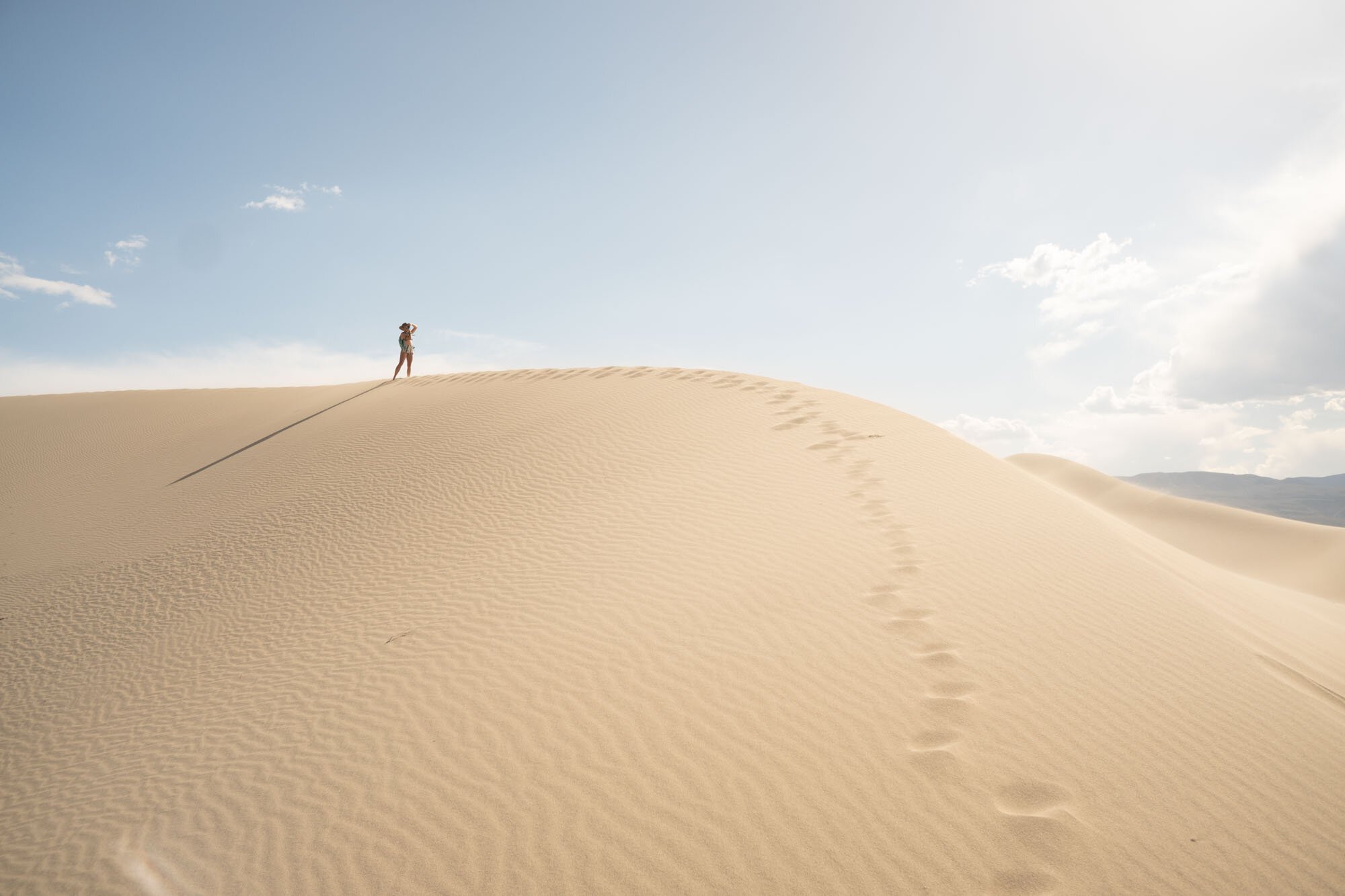
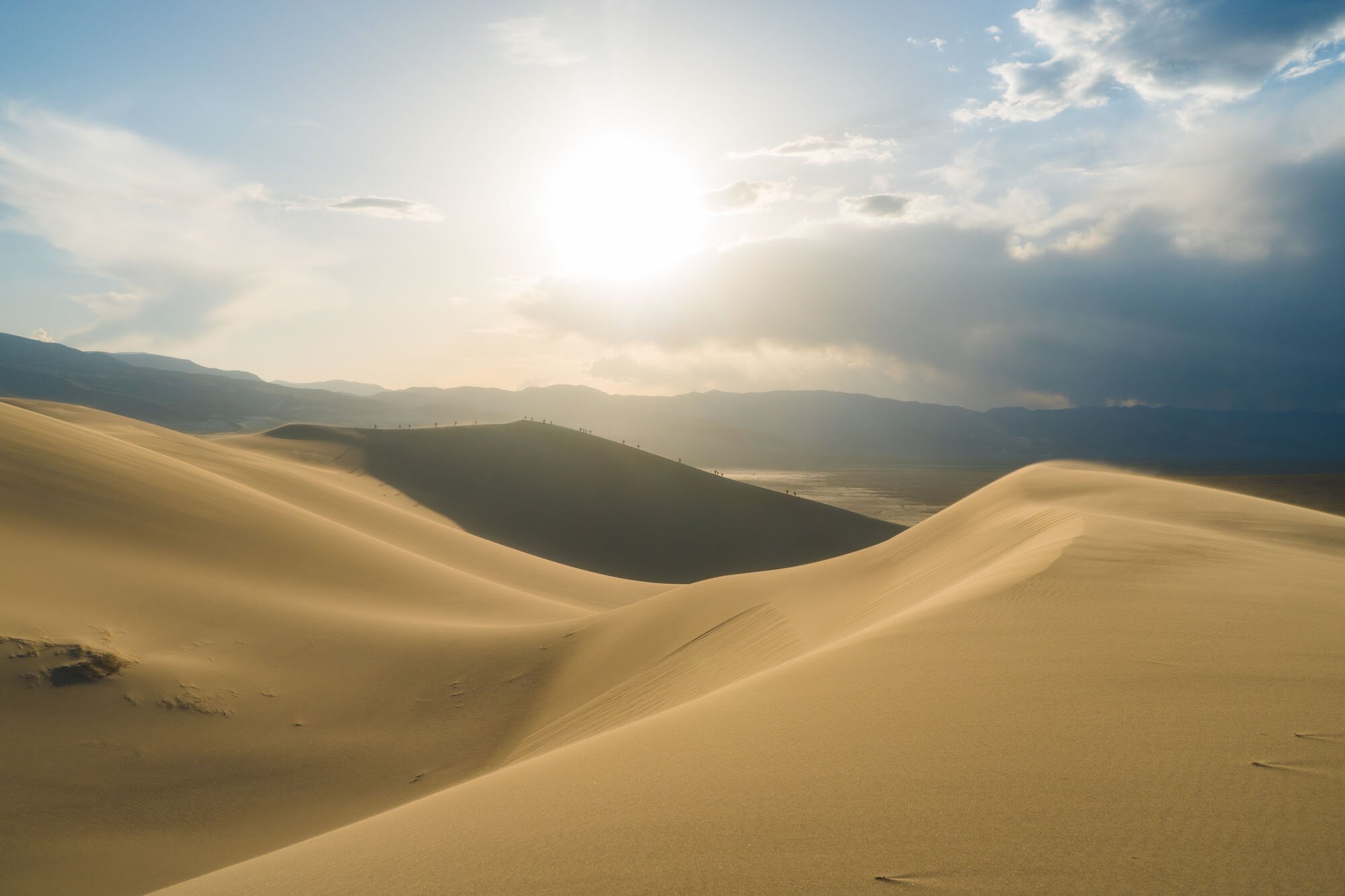

The Racetrack
There are a few ways to get out to The Racetrack. The most direct path to the Racetrack is on Racetrack Valley Road and starts from the Ubehebe Crater. The drive time from Furnace Creek is at least 3.5 hours each way. We, however, took the longer route from Saline Valley to Hunter Mountain. The road lead us past countless little abandoned mines before we intersected Race Track Valley road at the famous Teakettle Junction. Teakettle junction is a traveler’s monument where people leave behind inscribed teakettles. The Racetrack itself is a playa (dry lakebed) best known for its strange moving rocks that leave their trails in the ground. The Racetrack is about 3 miles long and 2 miles wide. The preexisting lake evaporated and left behind mud, at least 1,000 feet thick!
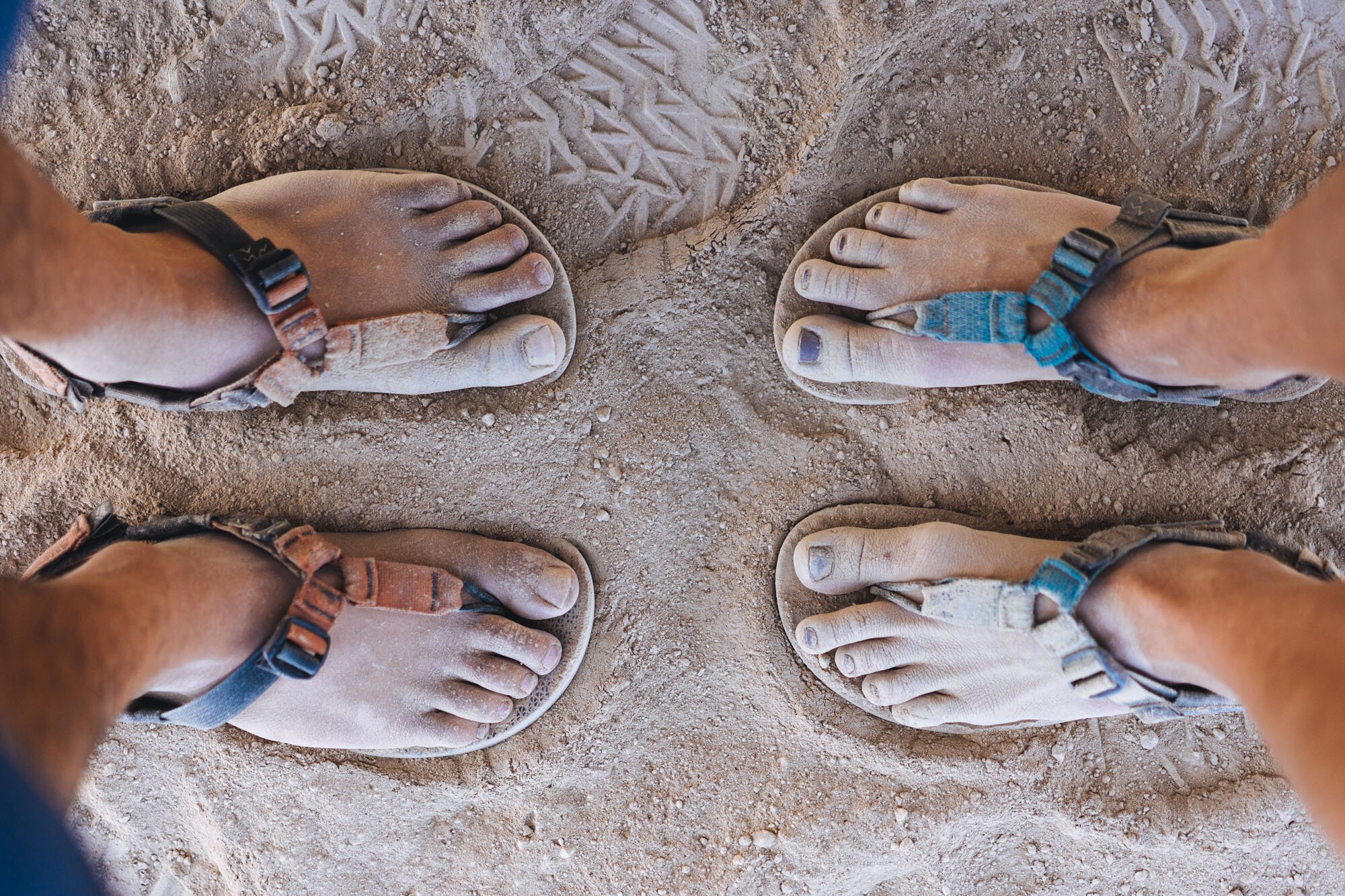
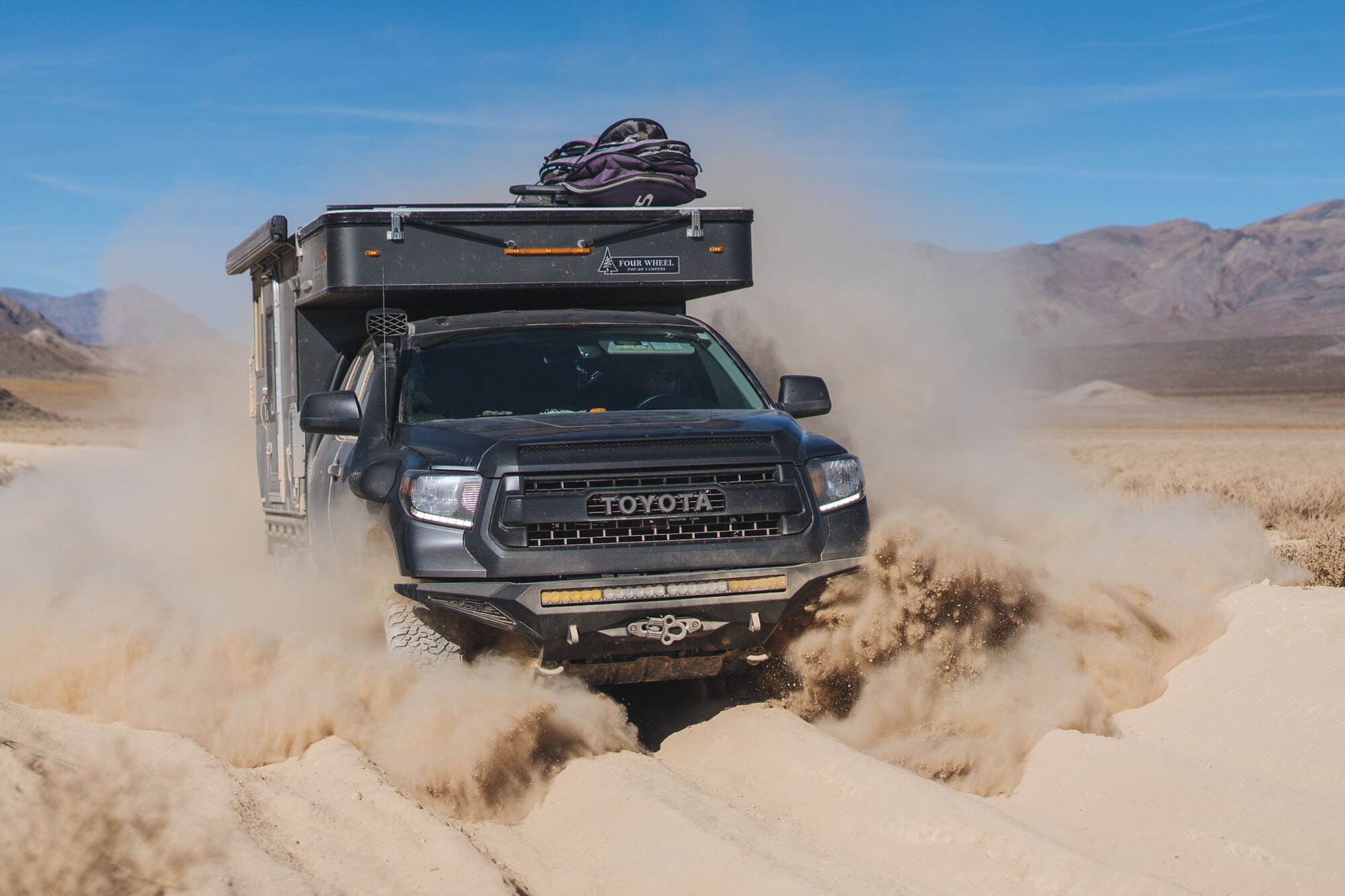


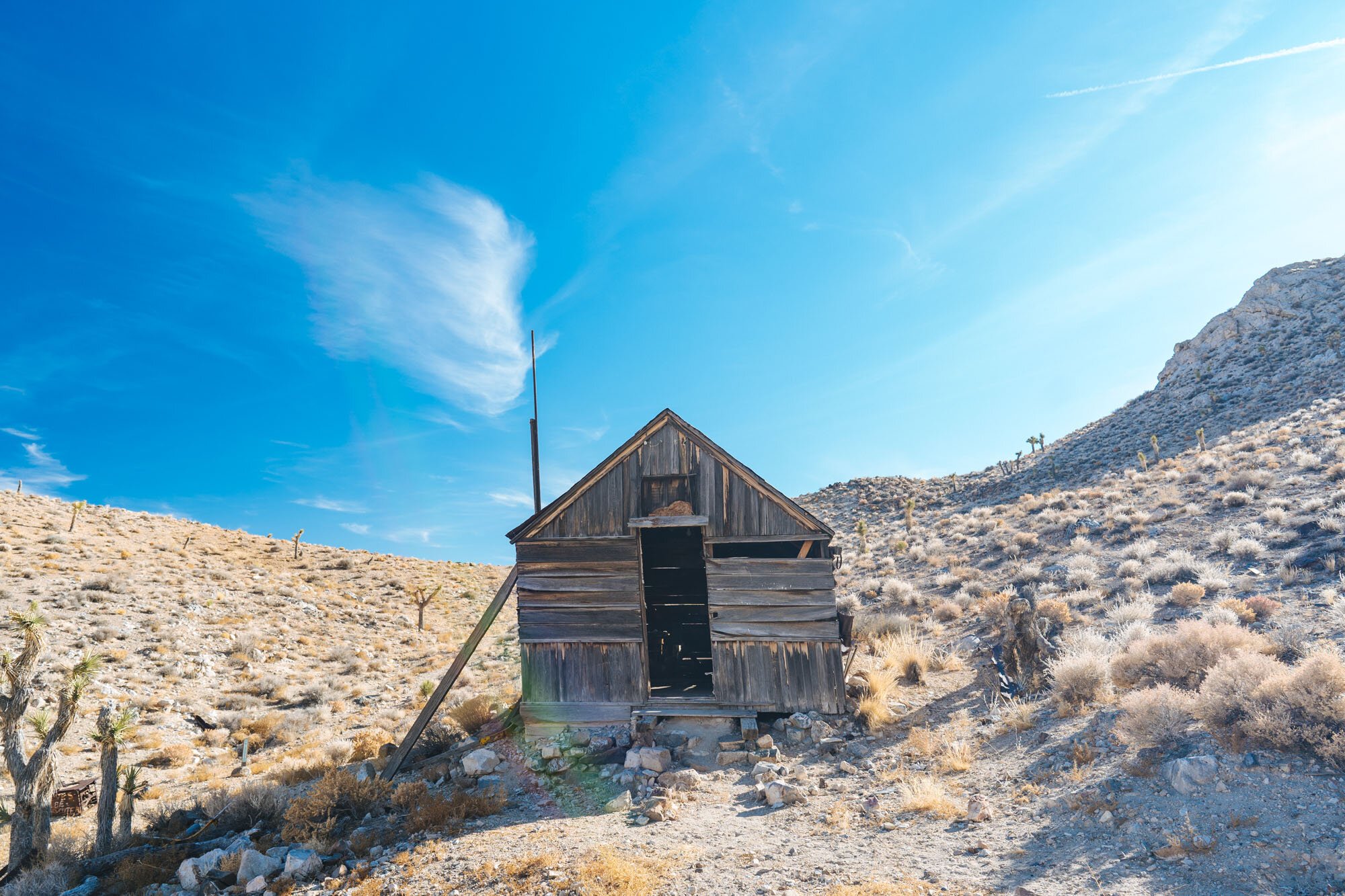
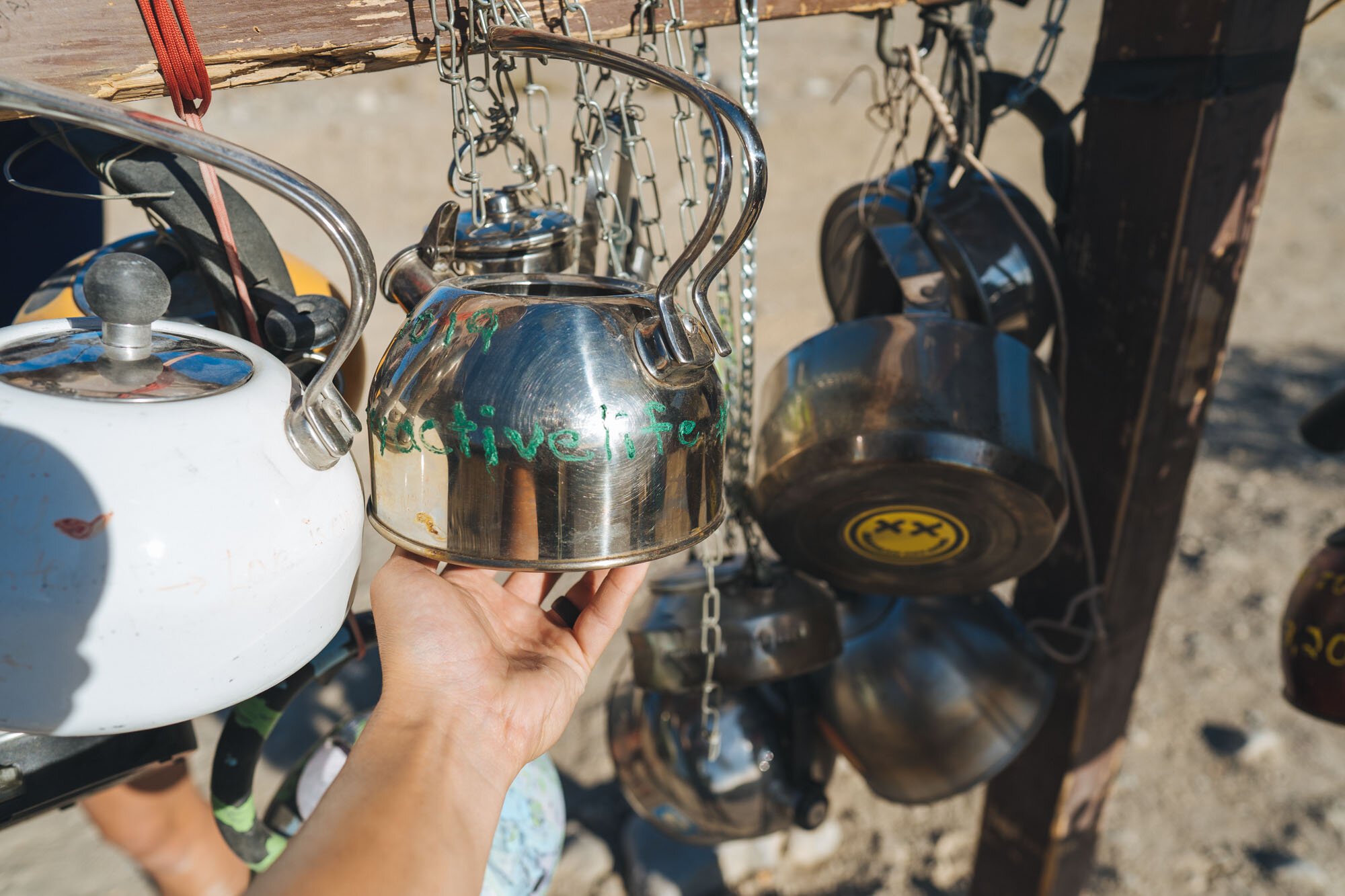
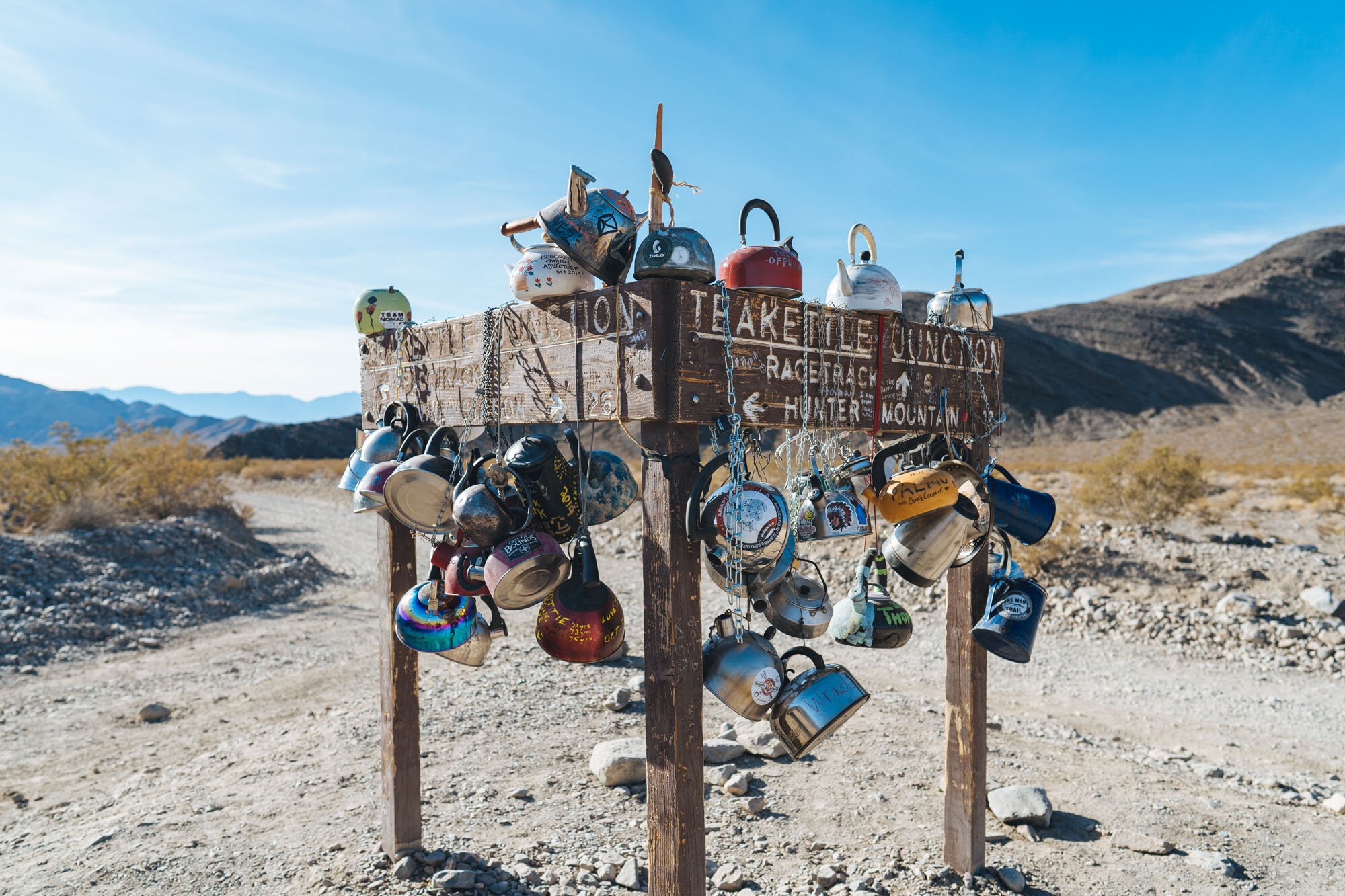
The Grand Stand: Located at the north end of the Racetrack, The Grand Stand is a large island outcrop of stone that provides great views of the Racetrack.
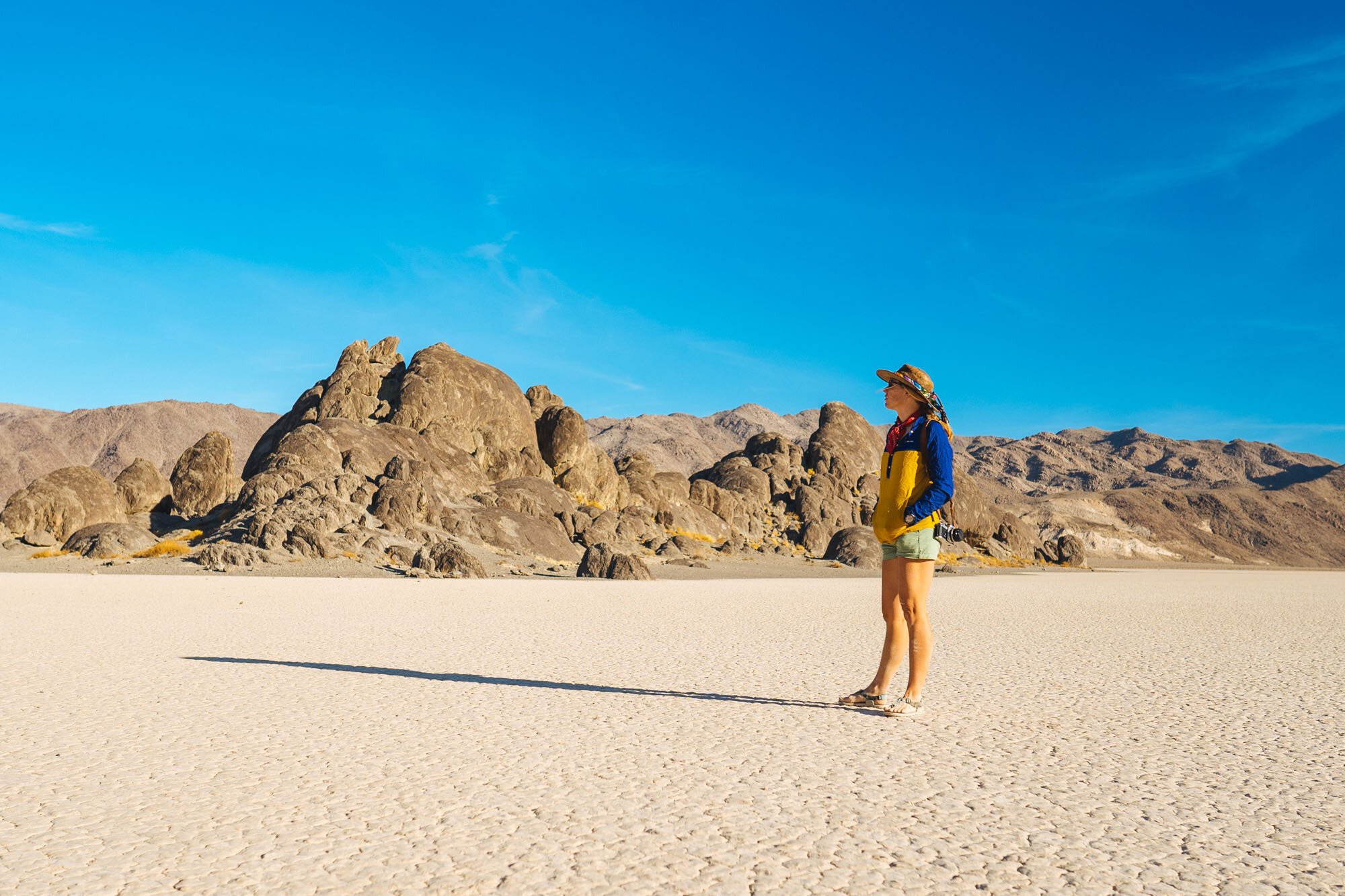
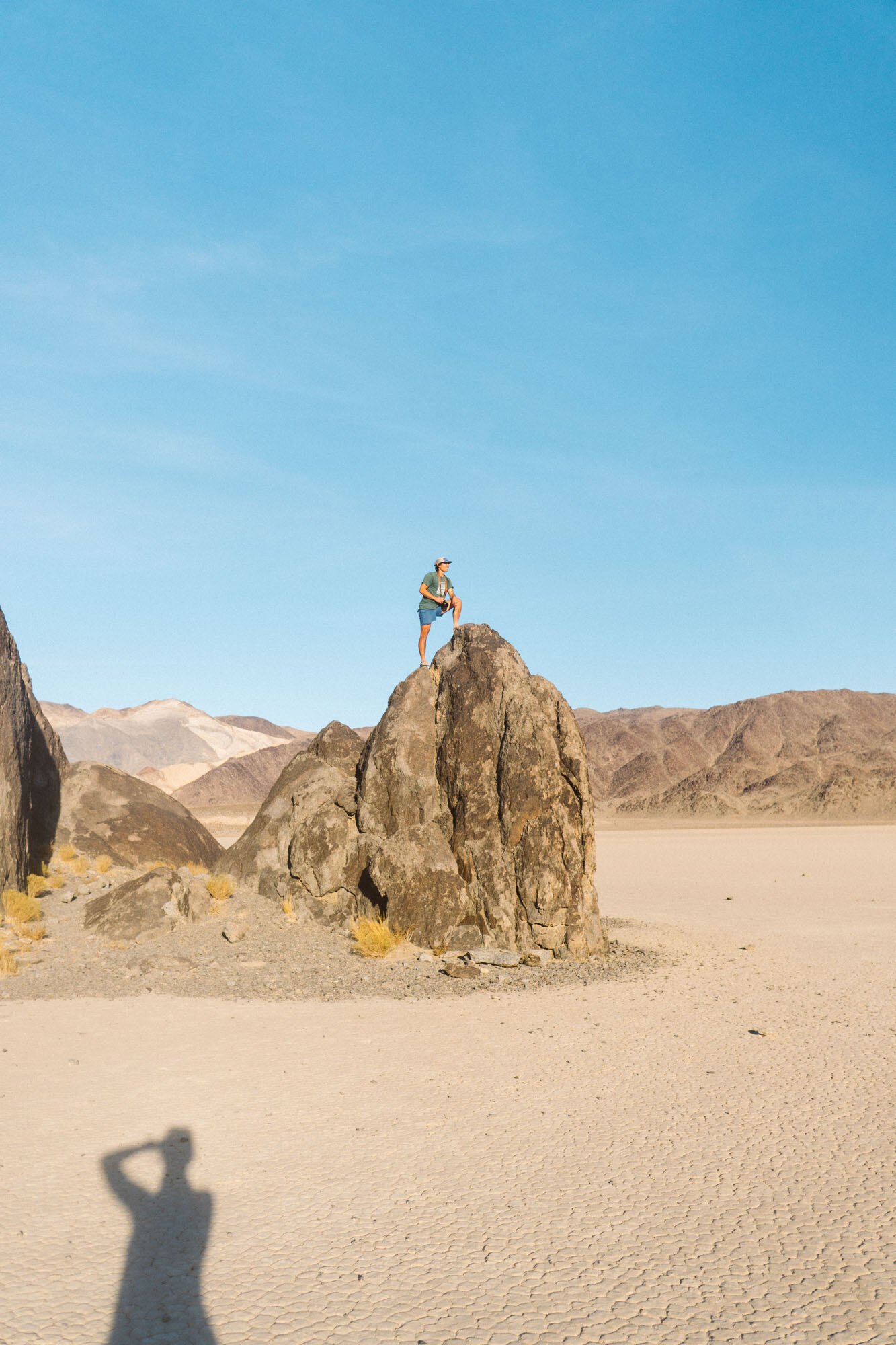
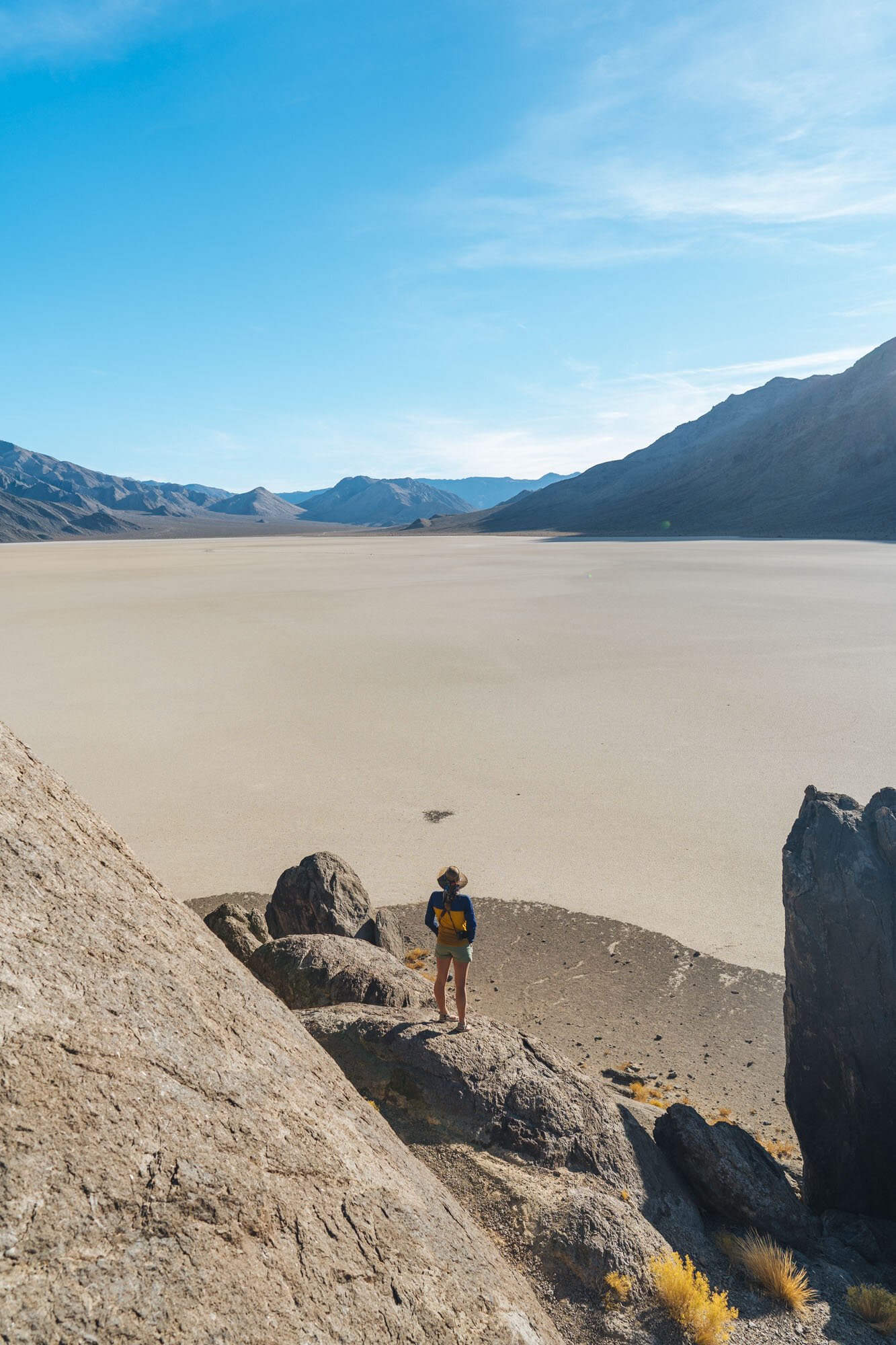
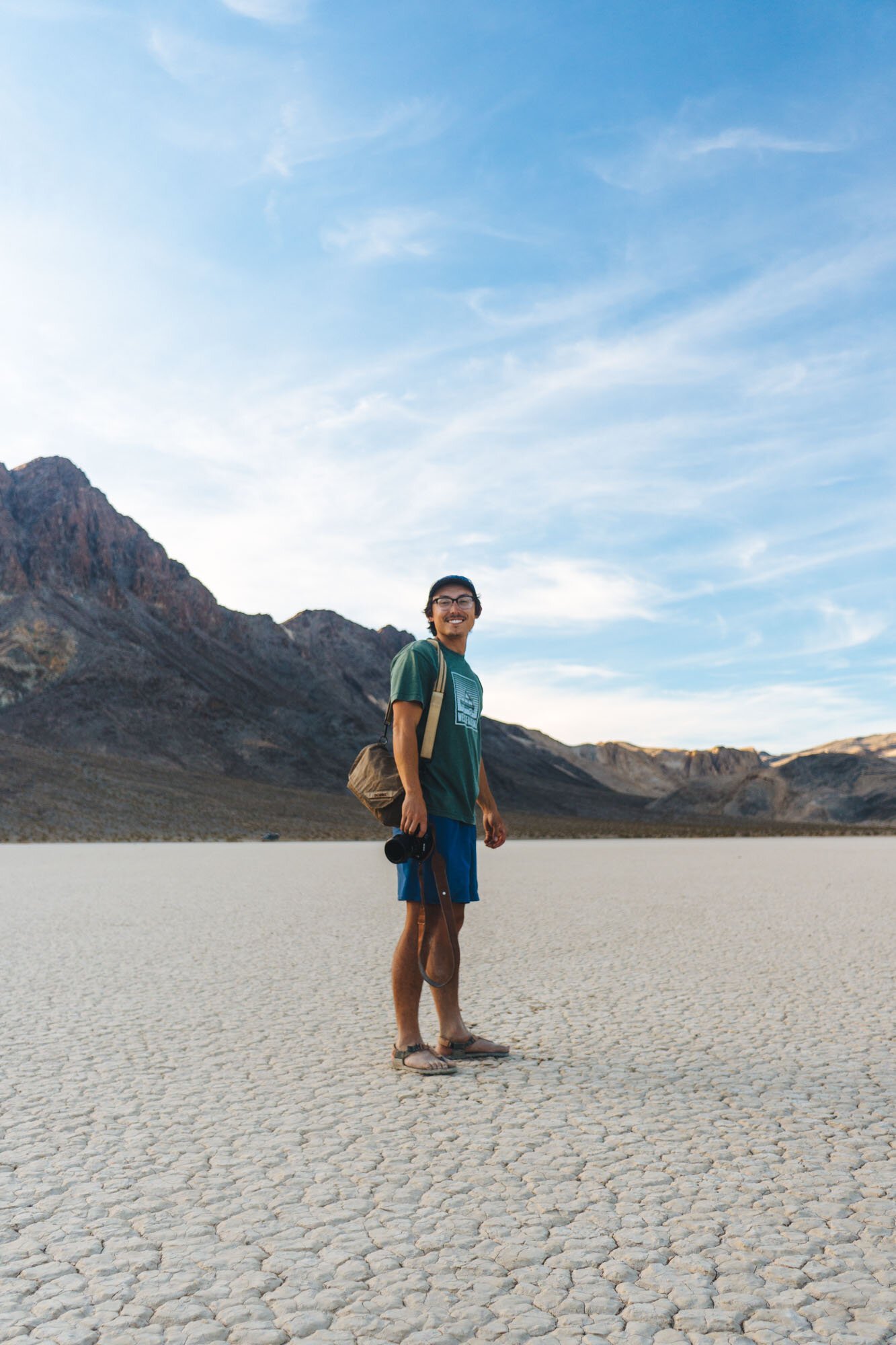

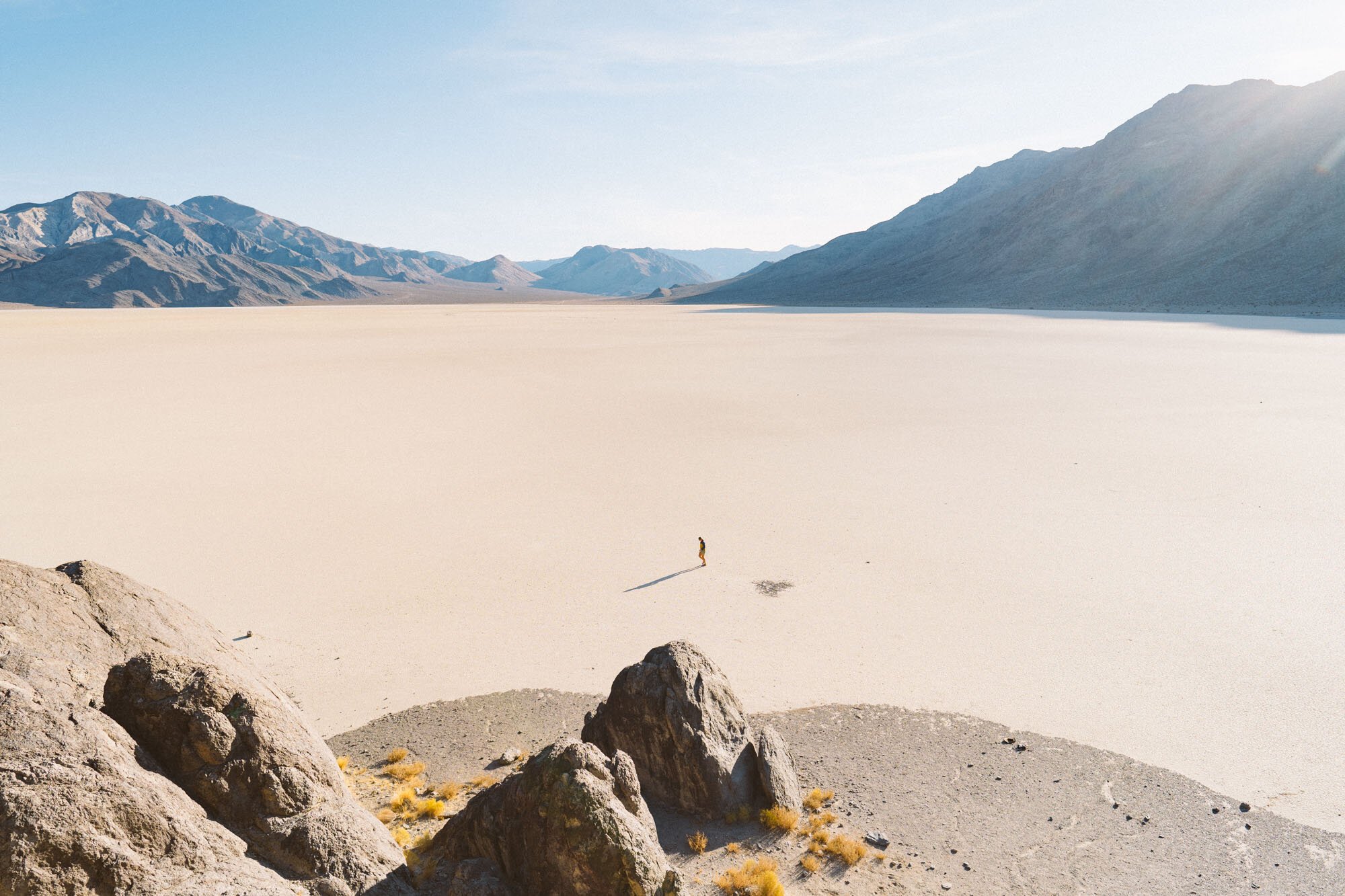
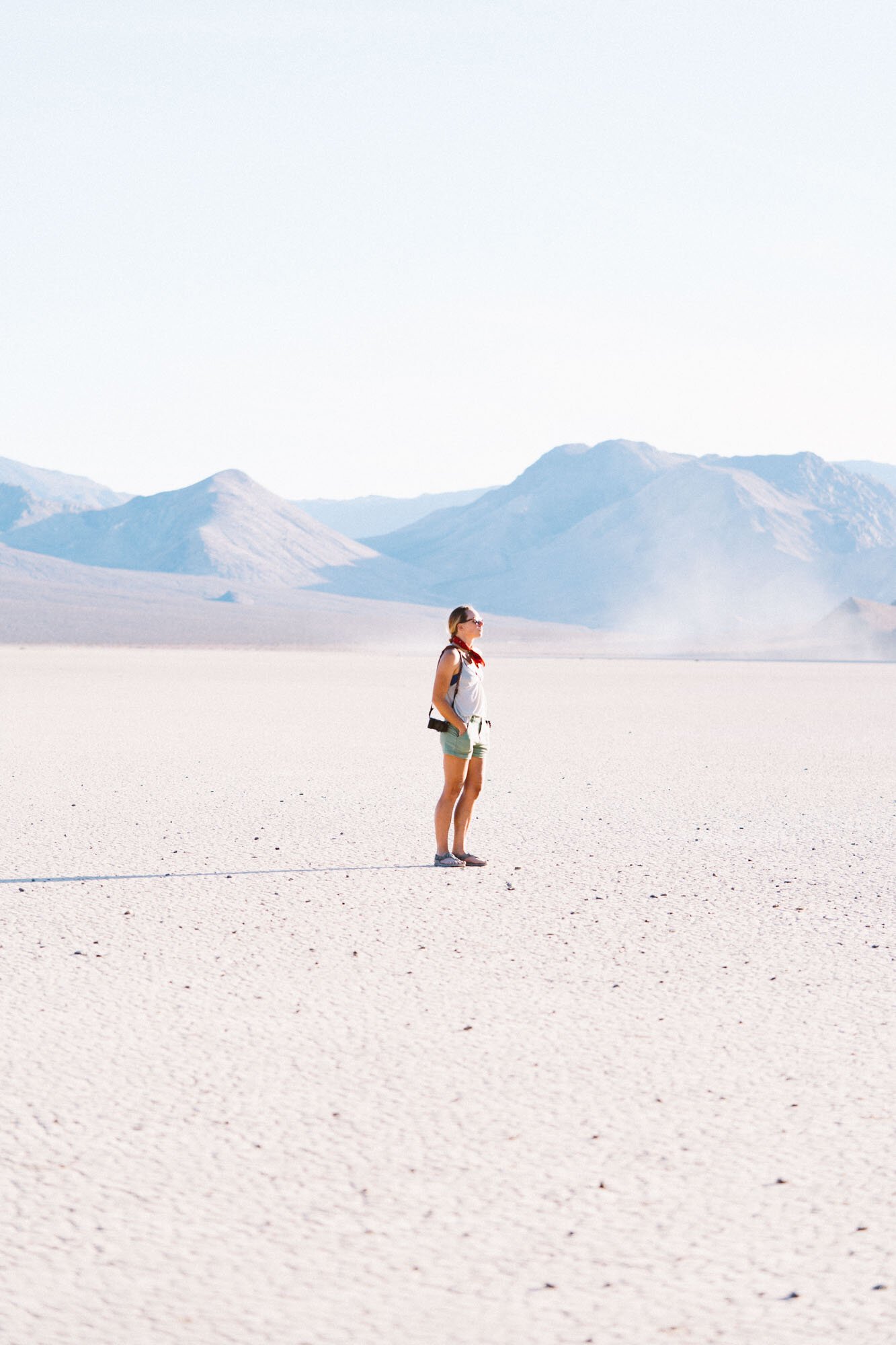
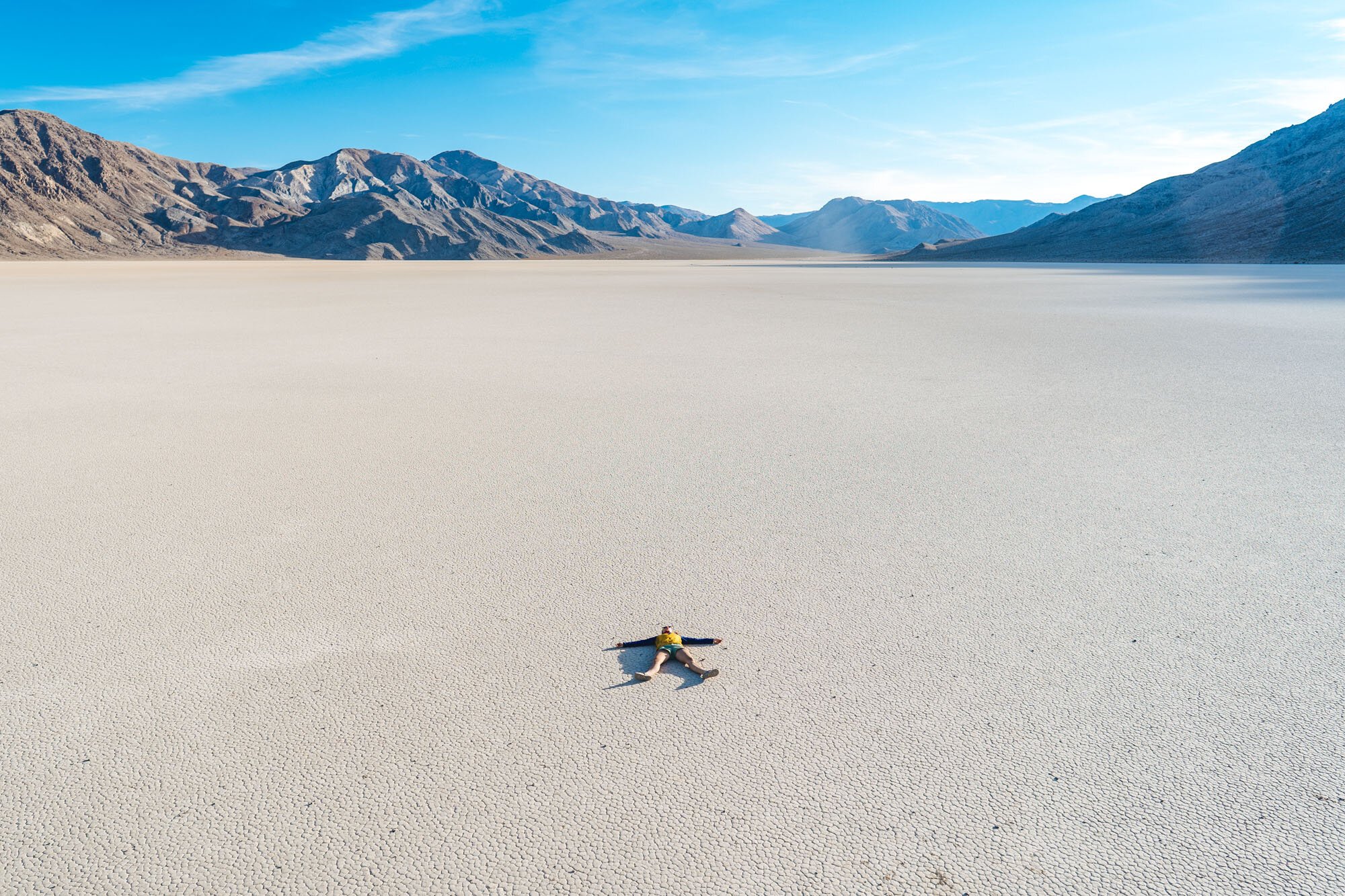
The Sliding Rocks: For years there have been theories of how the sliding rocks make their journey across the Playa. However, recently a study found that a combination of rain and wind enables the rocks to move. Small amounts of rain accumulation on the surface of the playa provide an extremely slippery surface for the rocks that are then pushed by strong and steady winds of 50 mph or more.
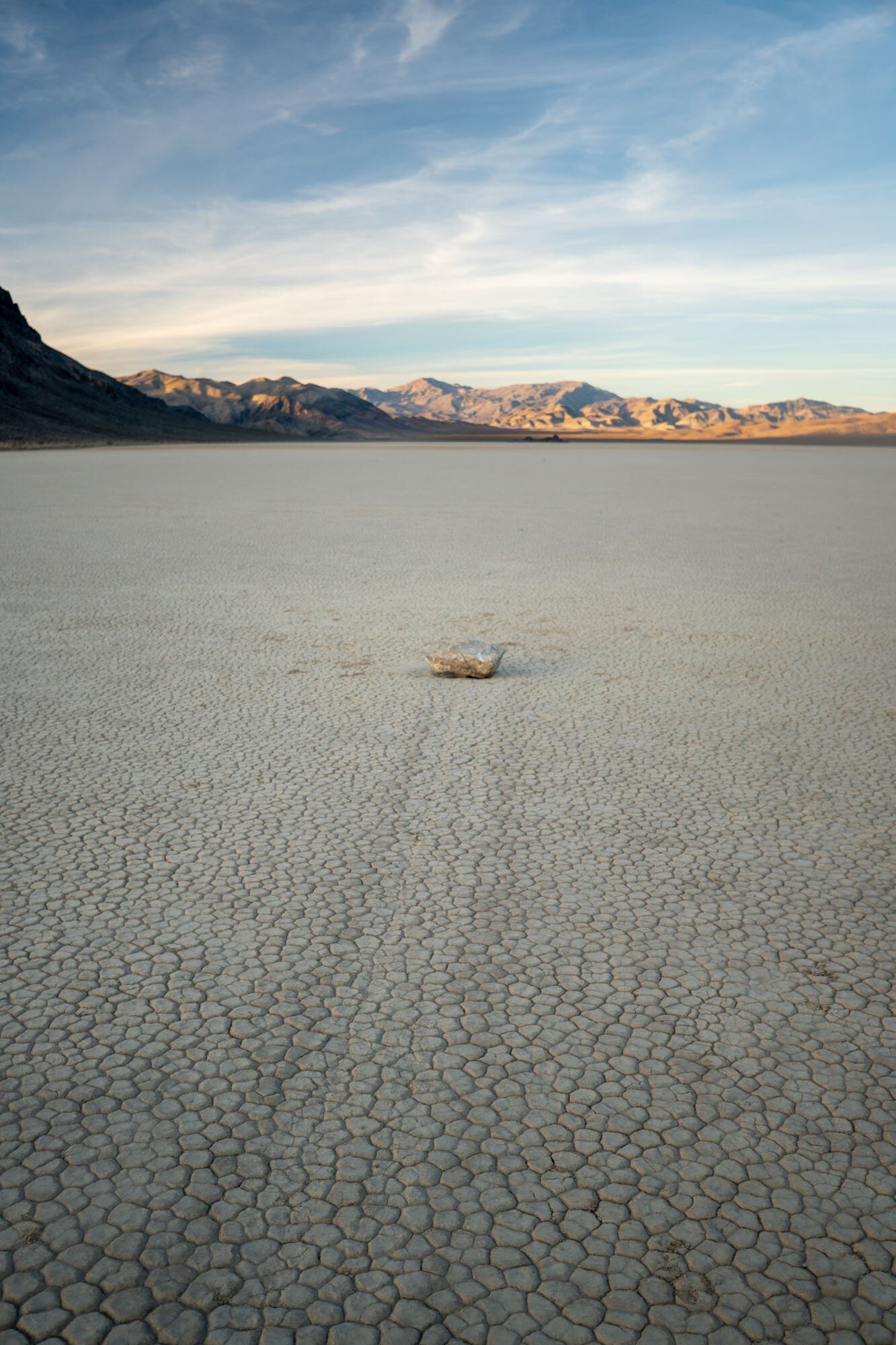


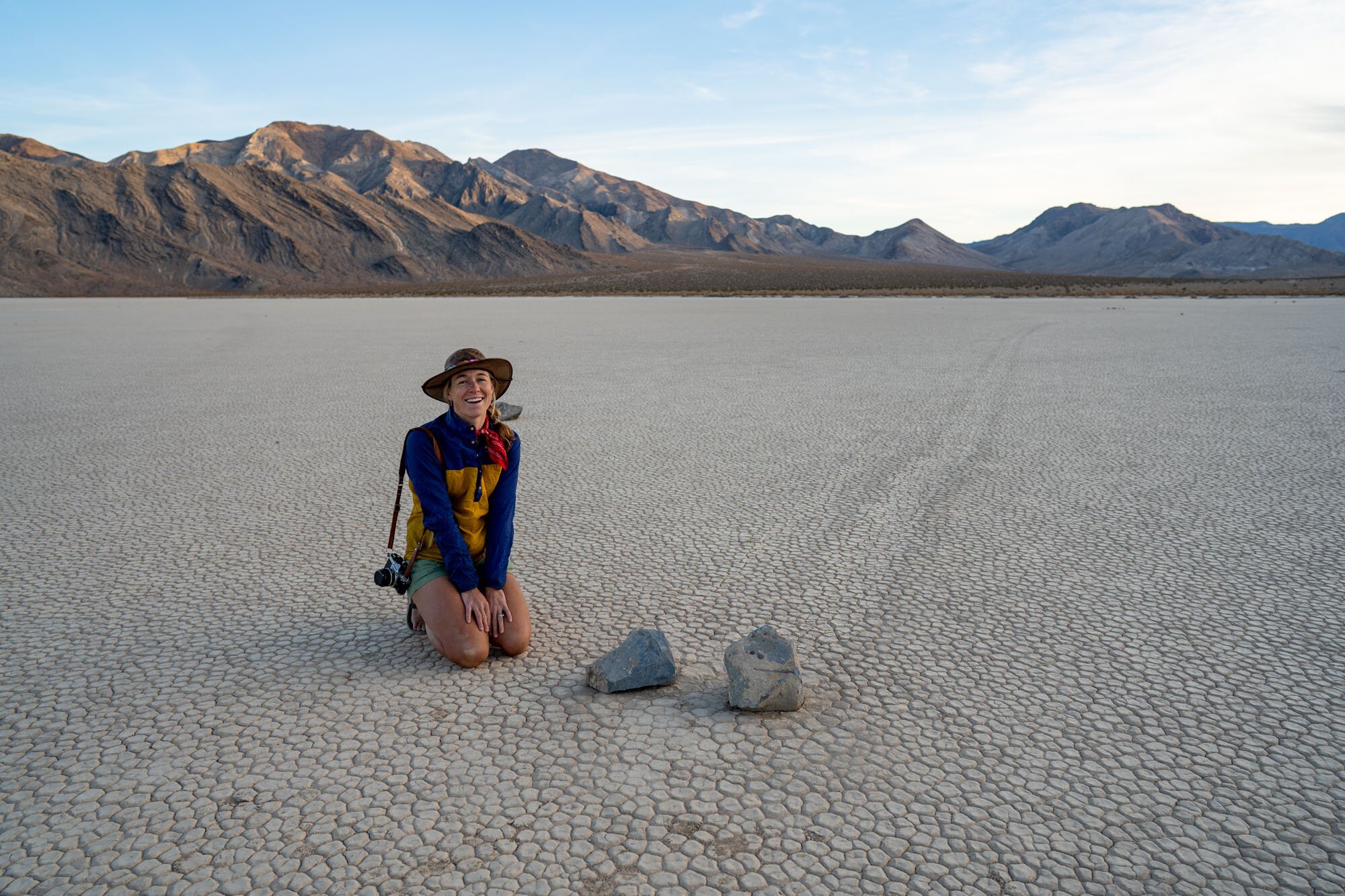
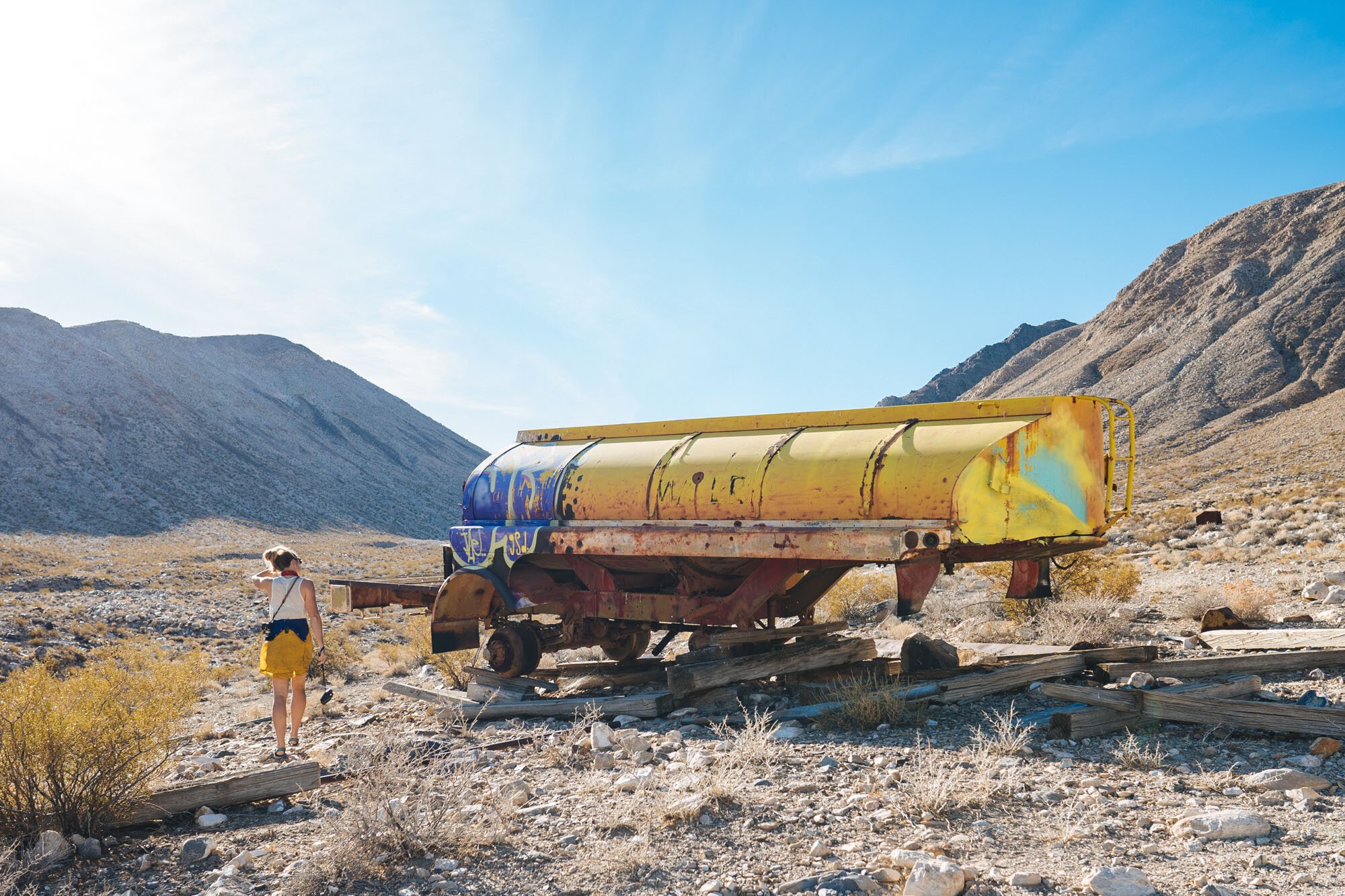
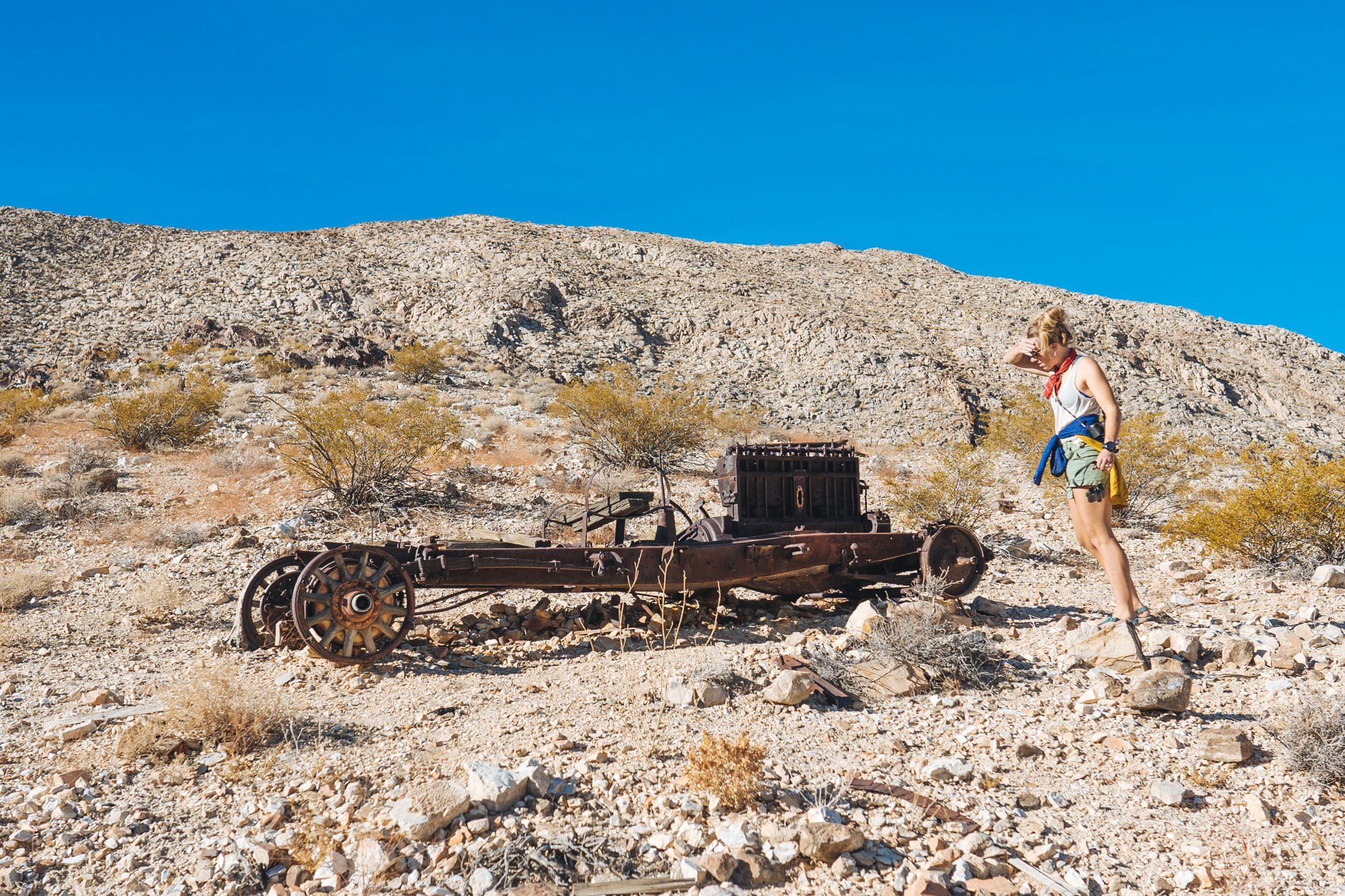
Here is a video documenting our last journey to Death Valley but more specifically our time at the Racetrack
**The road to the Racetrack is rough, and good tires, 4x4 and high clearance are sometimes required. Standard rental vehicles are not recommended, and often get flat tires. Use extreme caution on this road in the summer heat. There is no cell phone coverage in the area. Other access roads make for even longer and more remote adventures. Driving offroad is strictly prohibited.**
That covers our 8 favorite things to do in Death Valley National Park. The appeal of Death Valley is definitely the extreme conditions that it has to offer. If you’re planning a trip to this area be sure to do your research ahead of time to be sure that you’re planning for the conditions! If you know of anything that isn’t on this list we’d love to hear it because we’re always looking for new things to do and see in the area!












